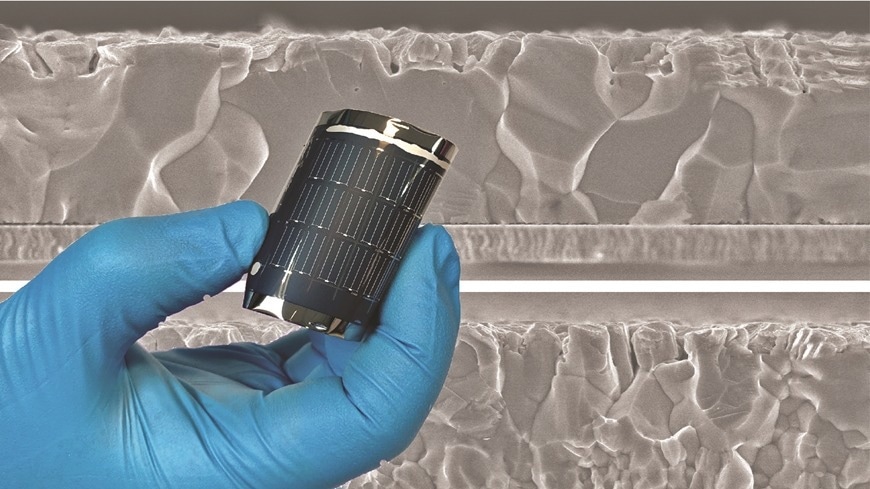Empa researchers have established a new efficiency record of 22.2% for flexible CIGS solar cells on the polymer film just one year after declaring an efficiency record. This type of solar cell is ideal for use on vehicles, buildings, airships, satellites, and mobile devices.

Flexible CIGS solar cells are composed of very thin layers, including a compound composed of the elements copper, indium, gallium, and selenium. The layers are deposited onto flexible polymer substrates, mainly by vacuum processes. Image Credit: Empa
Empa scientists have boosted the effectiveness of CIGS flexible solar cells yet again. Independently verified measurements showed a power conversion efficiency of 22.2% for converting light into electricity, an advance over their previous record of 21.4%.
A rigid crystalline silicon solar cell has the highest efficiency of 26.7%. The team led by Romain Carron, group leader of Empa’s Laboratory for Thin Films and Photovoltaics, presented their latest findings at the 8th World Conference on Photovoltaic Energy Conversion (WCPEC-8) on September 26th, 2022, in Milano, Italy.
The Cu(In,Ga)Se2 semiconductor layer absorbs light and is deposited using a low-temperature co-evaporation technique on a polymer film in these flexible solar cells. Shiro Nishiwaki, an Empa scientist, changed the composition of the layer to boost the performance of the device and output voltage.
Two approaches explored to alloy the crystal delivered similar improvements in device performance.
Romain Carron, Group Leader, Laboratory for Thin Films and Photovoltaics, Empa
Therefore, the findings can be transferred with equivalent outcomes at an industrial scale following different implementations. The 22.2% efficiency of the solar cells was independently measured in Freiburg, Germany, at the Fraunhofer Institute for Solar Energy Systems ISE.
Setting New Records for 23 Years
Ayodhya Tiwari and his colleagues have been studying flexible thin film solar cells for over 23 years. They set various efficiency records over the years thanks to their extensive knowledge of technology and fundamental physical processes. Their “record series” began with 12.8% in 1999 and has since progressed to 14.1% (2005), 17.6% (2010), 18.7% (2011), 20.4% (2013), with more recent progress to 20.8% (2019) and 21.4% (2021).
In the regime of high-efficiency constraints, every slight increase necessitates a careful study of the variables limiting performance, as well as a novel approach to overcome the obstacle. The current efficiency boost is due to alloying the light-absorbing semiconductor layer to increase electronic characteristics.
This technology’s flexible and lightweight solar modules are particularly well adapted for use on building roofs and facades, vehicles, greenhouses, airships, and portable electronics. For the roll-to-roll manufacturing of lightweight flexible solar modules for these kinds of applications, Empa works with the Swiss business Flisom. The Swiss Federal Office of Energy (SFOE) funded the study.